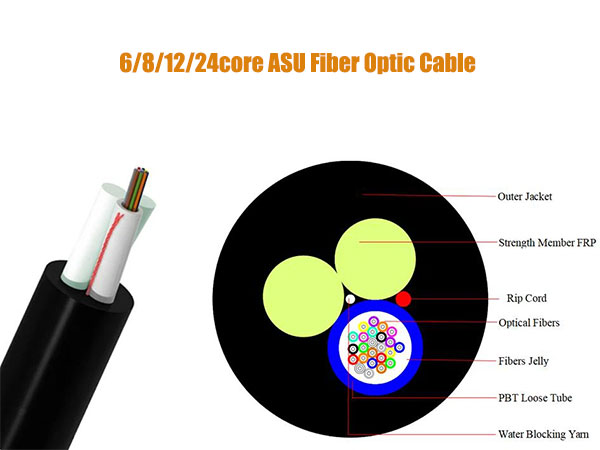Choosing the ideal cable for a project is essential for a successful installation and for avoiding unnecessary expenses. For this it is important to know the particularities of each optical cable available. To help you, we have separated the main differences between AS and
ASU cables, which are the most used for urban backbone, backhaul and subscriber access network installations. Check it out below!
AS cable

The acronym that gives the name to the optical cable must be the first point to be understood. In the case of the AS cable, the acronym derives from “self-supported”, which means that the cable has the characteristic of being self-supporting, being indicated for aerial installations, without the use of a rope. The number that accompanies the acronym refers to the limit of meters that the cable is self-supporting. AS cables can be used in spans of up to 200m, that is, the distance between the installation poles can be up to 200m, in which case its denomination will be AS200 cable. Other possibilities for AS cables are AS80 and AS120.
The core of the AS cable is made up of up to 12 loose tubes (the thermoplastic tubes that hold the optical fibers together), and each loose tube can have up to 12 optical fibers inside. Thus, the AS cable can have up to 144 fibers.
You can see more details about the AS cable in the product datasheet.
ASU cable

As with the AS cable, the first two letters of the ASU cable abbreviation mean that it is a self-supporting cable, while the letter U means “single”, which refers to the only loose tube that makes up the cable's core. As it has a loose tube, ASU cables can have a maximum of 12 optical fibers.
These cables are commonly used in spans of up to 80m and 120m, so the most common denominations are ASU80 and ASU120 cables.
The ASU cable is totally dielectric, that is, the elements that make up the cable do not conduct electrical energy, which allows it to be used in ducts through which electrical cables also pass.
The ASU cable datasheet is also available for viewing here. (INTERNAL LINK ON PRODUCT PAGE)
But how do I choose the ideal cable for my project?
Now that you know the main characteristics of AS and ASU cables, it's easier to know which one is ideal for your project. For this choice, you must mainly consider the amount of fiber and the application of the cable.

If your project requires more than 12 optical fibers, the choice should be the AS cable, since the ASU has a maximum capacity of 12 fibers. If your project requires less than 12 fibers, ASU cable is more advantageous, as it is lighter and more compact than AS cable, which also impacts installation costs, as ASU cables allow the use of loops and smaller preformed loops.



